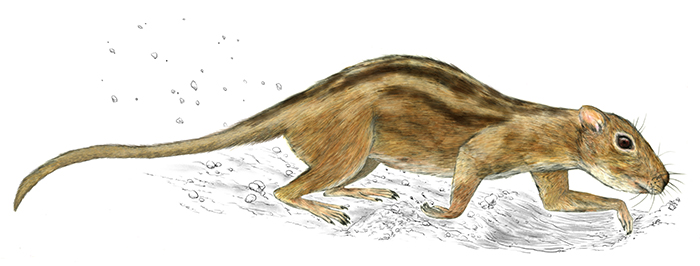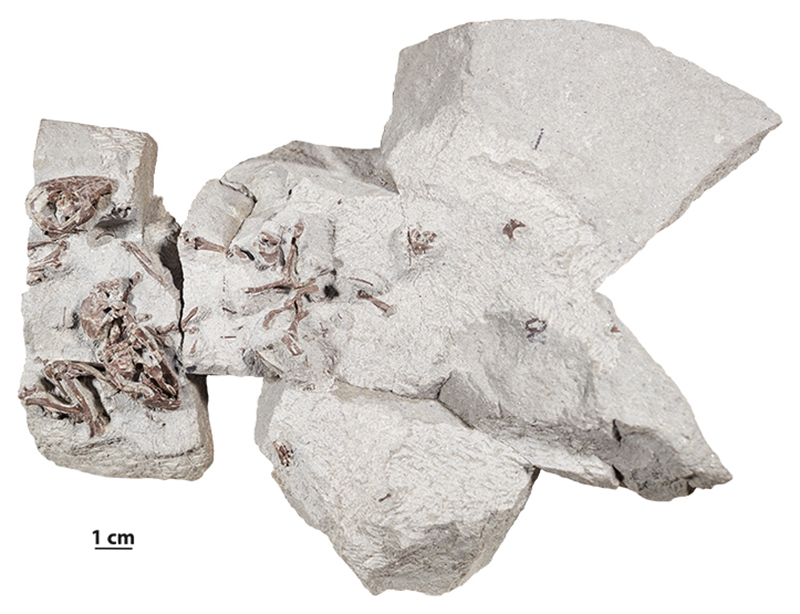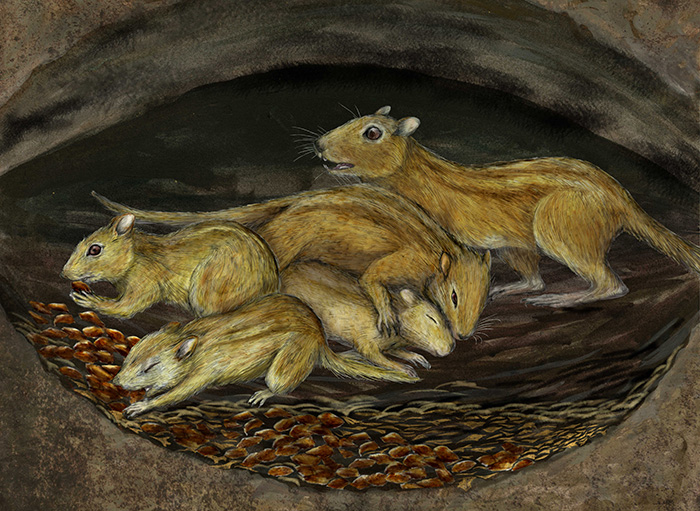How long have mammals been social creatures? At least since the Late Cretaceous part of the dinosaur age, according to a new study, which puts back the earliest evidence of the behaviour by some 10 million years.Studying fossils of the small rodent Filikomys primaevus (meaning "youthful, friendly mouse") dated to around 75.5 million years ago, palaeontologists have discovered evidence of the animals hanging out and living in groups.
We're not just talking about adults bringing up their young – the site at Egg Mountain in western Montana shows adults and younger animals choosing to burrow and nest together, perhaps some of the first such social activity in history.
"It is really powerful, I think, to see just how deeply rooted social interactions are in mammals," says palaeontologist Luke Weaver, from the University of Washington.
"Because humans are such social animals, we tend to think that sociality is somehow unique to us, or at least to our close evolutionary relatives, but now we can see that social behaviour goes way further back in the mammalian family tree."
"Multituberculates are one of the most ancient mammal groups, and they've been extinct for 35 million years, yet in the Late Cretaceous they were apparently interacting in groups similar to what you would see in modern-day ground squirrels."

It had been thought that this kind of deliberate social behaviour developed after the extinction of the dinosaurs 66 million years ago, and primarily in the Placentalia class of mammals that humans belong to.
Not so, according to these fossils – the type of rock they were found in, how well they were preserved, and the traits that F. primaevus share with modern-day burrowing animals all suggest that these ancient creatures were happy chilling out together.
The researchers couldn't find any evidence of bite marks on the fossils, so it's unlikely that predators put these animals together, and if they'd been moved by the flow of a river then the fossils wouldn't be as complete as they are.

"These fossils are game changers," says palaeontologist Gregory Wilson Mantilla. "As palaeontologists working to reconstruct the biology of mammals from this time period, we're usually stuck staring at individual teeth and maybe a jaw that rolled down a river, but here we have multiple, near complete skulls and skeletons preserved in the exact place where the animals lived.
"We can now credibly look at how mammals really interacted with dinosaurs and other animals that lived at this time."

Today, around half of Placentalia or placental mammals socialise in this way (global pandemics permitting), and the behaviour is also seen in some marsupials such as kangaroos.
Humans hang out together for all kinds of reasons beyond the business of reproducing and bringing up children, but in evolutionary terms the behaviour can help in avoiding predators, sharing resources, and keeping warm.
Now it seems that behaviour started a lot earlier than we thought. As much of the world continues to grapple with restrictions on meeting up in groups, it's a reminder that we're social animals at heart – something the research team is well aware of.
"It was crazy finishing up this paper right as the stay-at-home orders were going into effect – here we all are trying our best to socially distance and isolate, and I'm writing about how mammals were socially interacting way back when dinosaurs were still roaming the Earth!" says Weaver.
The research has been published in Nature Ecology & Evolution.



No comments:
Post a Comment